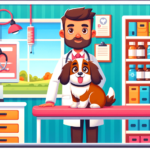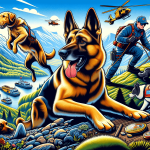Dogs may make delightful pets and faithful guards, but they also come with their share of danger. One of the most serious problems for a dog owner is that of aggression.
An aggressive dog could be a danger to itself, its owner, other people, and other animals that come across it. If not kept under control, a dog could snap at, attack, and even maul a person or animal if it feels provoked.
There’s no real way to do away with aggression in a canine altogether. However, there are several steps you can take to make sure your dog’s aggression is controlled. Read on below to get started:
1. Get a Medical Opinion
If you’ve had your dog for some time and these are the first signs of aggression you’ve seen, the issue may be something else. Animals cannot express what’s bothering them in words, so they may showcase their problems by lashing out at those around them. This could especially be the case if your once-loyal dog is snapping at you or other family members.
Some internal injuries, disease, worms, or even age could be the cause of sudden aggression in your canine. Hence, you should make an appointment with your veterinarian as soon as possible. Early diagnosis could be the key to prevent the aggression from getting worse. It could also prevent others from getting seriously hurt, especially if your dog is a large and strong one.
Don’t jump to medical conclusions like rabies without a proper checkup. However, you may have to prepare yourself for the worst and do what needs to be done for the benefit of everyone.

2. Get Professional Training
The first step was to rule out any medical or health issues. The second should be to consider calling in a professional dog trainer. Aggression is not something a layperson can or should handle on their own, even with Google at their fingertips.
Dog behaviorists and trainers know how to handle a dog after they understand its unique needs. They can help the dog owner make a plan for managing, controlling, and reducing their dog’s aggressive actions.
The best way to find a skilled professional for handling your dog’s behavior would be to ask a trusted vet. If that fails, check out a good website such as the one for the Association of Pet Dog Trainers. If they don’t provide services in your area, asking around on social media may be a good idea as well.
3. Determine the Symptoms
There could be some triggers that set your dog off without your realizing it. Pay close attention to what causes the animal to growl. It may even be that the reaction is just a defense mechanism and not much to get worried about.
For instance, the dog may growl or snap at someone who approached them during its mealtime. Others may get aggressive when a stranger walks up to their place of residence as a part of their training. If this happens, this may not be the fault of the dog but something that needs to be unlearned.
Once you know the exact reasons behind the canine aggression, you can formulate a plan to deal with it. If you try certain tricks and hacks without any understanding, you may not get very far with just the trial and error method.
Even if a professional isn’t available right away, you can take care to protect the dog from situations that goad it into aggressive behaviors. For instance, if your dog doesn’t like strangers, make it exercise in the yard or in the early morning when not many people are around.
4. Think Positive
Many dog owners could easily get frustrated by the consistent danger their dog seems to present. They may even consider beating the dog in order to train it. However, this isn’t the answer to anything. Positive reinforcement is the best way to get an animal to learn. Plus, there’s a lot to be said for gradual immersion into situations which usually set the dog off. One negative reinforcement you can safely do is to buy your dog a shock collar. It helps to train stubborn dogs without hurting them.
For instance, if the dog doesn’t want to deal with other people, start off by keeping it far away from strangers. Give it treats, praise, and lots of petting. Stand a little closer every day until the dog learns to handle the presence of strangers and even associate it with positive items. The same can be true if your dog is wary of vehicles, the mailman, or anything else.
5. Take Precautions
You may be on the right track to alleviating your dog’s aggression, but you need to be safe as well. You also need to keep others safe from the animal if it’s displaying aggressive tendencies. The more serious the problem, the stronger steps you need to take in order to prevent anything untoward happening.
Make sure you have a very strong fence before anything else. The dog shouldn’t be able to leap it or break through it in any way. One may also choose to invest in an electric fence if possible. By this you make sure your pet won’t be able to get out and run after passing cars, trucks, or people.
Other precautions would include strong leashes, training harnesses, and your own strong arms. You should be able to keep your animal under control by sheer brute force if things come to a head. Muzzles or safety cones are also an option in public spaces. However, make sure that the dog is still able to drink, pant, and breathe properly no matter what.
Conclusion
Aggression is a disturbing quality in a dog or any other animal, but it doesn’t mean it should be put down or abused in any form. It may be difficult to get a dog under control, especially if it’s naturally aggressive, but a lot can be done with the proper patience, knowledge, and effort. When you get a pet, you are responsible for another living creature and should stick out the bad times as well as the good. The results would hopefully be more than worth it in the end.













